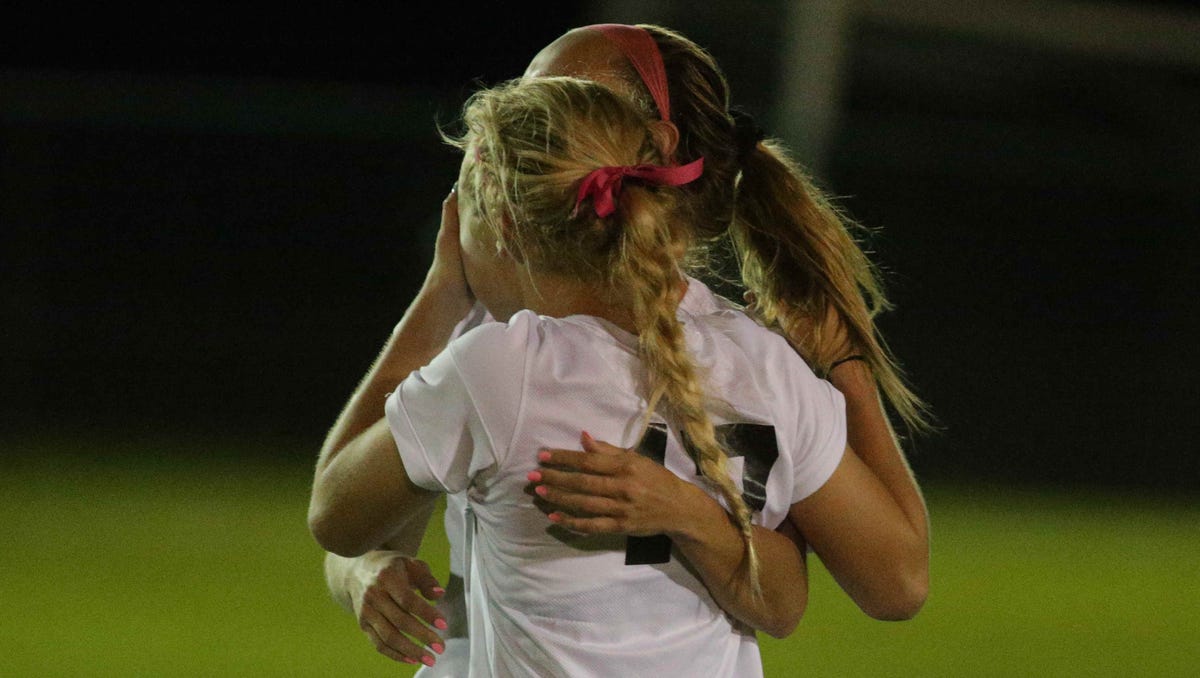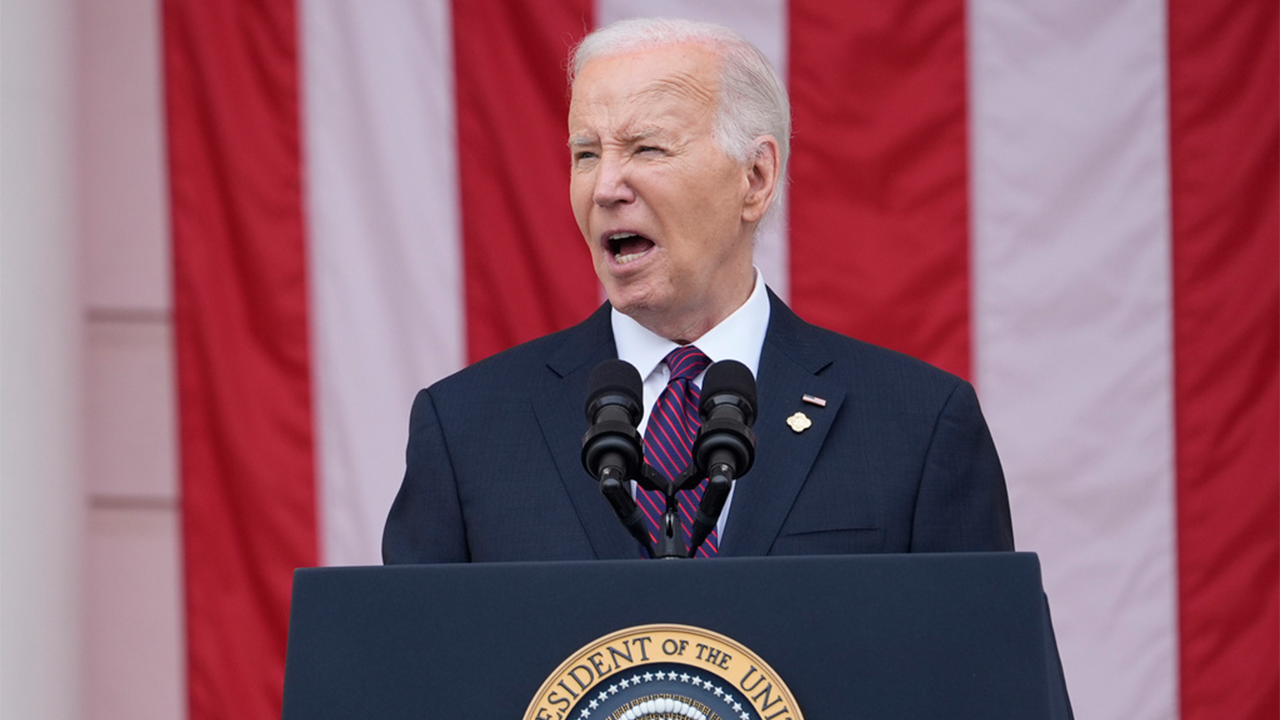Iowa
Think you have the slowest internet? You might be right. Iowa near the worst for speeds.

Are you getting all the internet you’re paying for?
Testing your internet connection speed is easier than ever and you don’t even need to be a technology wizard. Here’s what you need to know.
Kim Komando, For USA Today
Everyone wants faster internet, but sadly Wi-Fi speeds do not have equal access across each state.
By analyzing the results of more than one million speed tests in all 50 states between Sept. 1, 2022 and Aug. 31, 2023 High Speed Internet compiled lists of the ten fastest and slowest states for internet speeds in 2023. It ranked Iowa has the eighth slowest internet in the U.S.
Here’s what it came down to:
What’s the average U.S. internet speed in 2023?
High Speed Internet says that internet speeds across the country get faster every year. According to its speed test data, this year’s average nationwide internet speed is 44% faster than in 2022. This year, the average internet speed is 171.30 Mbps, last year it was 119.03 Mbps. In Iowa, the average speed is 138.48 Mbps.
But, it’s worth noting that most Americans still buy modest internet speeds. America’s median speed is only 90.96 Mbps. This is usually due to price and availability.
Which states have the fastest internet?
- Connecticut, 194.07 Mbps
- New Jersey, 202.20 Mbps
- Florida, 185.24 Mbps
- Delaware, 204.29 Mbps
- New Hampshire, 190.14 Mbps
Continuing from last year, states along the Eastern Seaboard lead in internet speed. Seven of the top 10 fastest states this year are located in New England or the New York tri-state area.
Connecticut, New Jersey, Florida and Delaware are some of the most densely populated states in the county, which High Speed Internet says vastly improves their chances of getting top-quality internet service. Internet providers tend to prioritize areas with a lot of customers, justifying the cost of expanding network access.
Which states have the slowest internet?
- Alaska, 112.39 Mbps
- West Virginia, 134.74 Mbps
- Montana, 103.67 Mbps
- Idaho, 113.21 Mbps
- New Mexico, 138.70
According to High Speed Internet, Alaska has the slowest average speed, but it’s likely skewed higher due to fixed wireless and fiber availability in Anchorage, the state’s biggest city.
The Federal Communications Commission pledged to increase access to affordable, high-speed internet options, with a goal of first boosting minimum speed standards and eventually providing 100% internet access nationwide.
Will fiber connections bring faster internet to Des Moines?
Des Moines residents want fast internet, but to get it they’re having to put up with ongoing construction.
Google Fiber, Metronet and Lumen Technology, formerly CenturyLink, are installing fiber optic internet cables throughout Des Moines in projects that are moving at different speeds and in different locations.
They can’t do the work simultaneously in a neighborhood because each company uses its own technology, and it would be unclear which would be liable if things went wrong on a shared construction site, City Engineer Steve Naber previously told the Register.
Fiber optic internet will bring faster connections to many areas. DSL internet speeds vary across the city, but some neighborhoods can get max download speeds as low as 3 mbps. Fiber optic connections could be as fast as 5,000 mbps and offer symmetrical download and upload speeds.
Will internet in Des Moines improve anytime soon?
Google Fiber started construction of its Des Moines network along Grand Avenue in October 2022. Phase 1 took the network from that trunk into the Waterbury, Westwood and Frisbie Park neighborhoods. The second phase is in the Woodland Heights, Ingersoll Park, North of Grand, Sherman Hill and Linden Heights neighborhoods. Phase three consists of the Cheatom Park, River Bend, Drake Park, Evelyn Davis Park, Carpenter, Mondamin Presidential, Chautaqua Park and New Visions neighborhoods. Phase four is an area from Interstate 235 to Hickman Road, centered on Drake University.
Google is also working on building out Google Fiber across West Des Moines.
Metronet plans to spread its network across most of Des Moines through 2023 and 2024. Pockets are complete on the north, south, west and east sides of the city. More are scheduled to be complete by the end of the year, according to the city. The company’s goal is essentially to install fiber in front of every Des Moines home, Naber said.
Lumen plans to start construction of its network in 2024 in sections of the River Bend, Drake, Sherman Hill, King Irving, Woodland Heights, Chautauqua Park, Mondamin Presidential, Cheatom Park and Good Park neighborhoods. Its initial plan covers a much smaller area than Google Fiber and Metronet’s.
Various providers are also working on projects across the suburbs.
Register reporter Philip Joens contributed to this article.
Victoria Reyna-Rodriguez is a general assignment reporter for the Des Moines Register. Reach her at vreynarodriguez@registermedia.com or follow her on Twitter @VictoriaReynaR.

Iowa
Mud, bugs, ponding and more plague Iowa corn and soybeans

An ag editor buddy of mine said that even with all the modern technology, farming still breaks down to mud, bugs, diseases, sunshine and a crop at the end. While it’s unknown how the 2024 crop will turn out, we will get one — it’s just a question of how large it will be.
Until we get there, though, there will be all sorts of maladies to overcome. Here’s a roundup from what Iowa State University field agronomists have seen so far this month in their areas. (Editor’s note: This is a condensed version. The full report can be found here.
Northwest Iowa
Leah Ten Napel, an ISU Extension field agronomist based in LeMars, reports that farmers took advantage of short work windows. As of May 21, she estimates 85% to 90% of corn has been planted, and 65% to 70% of soybeans have been planted. Weed control has been a challenge, with just small windows of low wind and dry fields occurring. “Issues with weed control might arise because of late or missed applications, or excessive rainfall following applications, she writes.
In some cases, soil crusting has caused emergence issues. However, good stands have occurred in quickly emerging fields. She advises farmers to do corn and soybean stand assessments in their fields to help with replant decisions.
Further east in northern Iowa, Gentry Sorenson, an ISU Extension field agronomist, reports approximately 70% of corn and 50% of the soybeans had been planted by May 21 planted across the area he serves. Heavy rainfall ranging from 1 to 4 inches occurred May 20 into May 21. Areas of Clay and Palto Alto counties also received hail.
Soil crusting also has occurred in the area, and rotary hoeing has been done to help break the crust so corn can emerge. Some areas of fields that that had standing water from rainfall earlier in the month were recently replanted. Unfortunately, some of those areas are underwater again due to the May 20-21 rainfall.
North-Central Iowa
Angie Rieck-Hinz, an ISU Extension field agronomist based in Clarion, notes the May 20 crop progress report indicates 82% of corn and 58% of soybeans are planted in the north-central Iowa crop reporting district. “My estimate is there are more corn acres planted than what that report reflects, and definitely more beans planted,” she writes.
Emergence uniformity is a concern. “A few farmers have shared they hope to be able to replant not only the wet areas, but in some cases, entire fields,” she writes.
While scouting, she’s noticed several dead heads of bromegrass in the ditches, indicating that common stalk borers may be present. “We are just on the cusp of having enough growing degree days (1400 GDDs) to start seeing movement to cornfields in my southern counties, so be sure to scout those field edges,” she writes.
She also notes cover crop termination has been a struggle this year. “I have seen some creative [and I hope successful] methods of termination this year,” she writes.
Northeastern Iowa
Farmers have been able to make much progress planting corn and soybeans in the area that Terry Basol, ISU Extension field agronomist serves. The USDA National Agicultural Statistics Service Crop Progress Report for May 2 showed 76% of corn acres in northeastern Iowa had been planted, with 65% of soybean acres planted.
Heavy rainfall the morning of May 21 has created flooding and ponding issues. For more information on ponding impacts on crops, check out these Integrated Crop Management news articles: Ponding Impacts on Corn Growth and Development and Ponding Impacts on Soybean Growth and Development.
Josh Michel, an ISU Extension field agronomist, estimates about 80% of the corn has been planted in his area, with soybean plantings at 65% as of May 21. “The furthest-along corn I’ve seen is around V2 or V3,” he writes. “Early-planted soybeans are just getting their first trifoliate leaves.”
Central Iowa
Meaghan Anderson, an ISU Extension field agronomist, reports her area received more excessive rainfall on May 20-21. This flooded fields and roads, washed out fences and caused other related issues.
She reports corn growth is variable, with some having just been planted to some corn in the V3 stage. Some fields have been replanted, due to emergence issues. Soybeans are anywhere from just planted to V1 (first trifoliate). As in other areas of Iowa, ponding from excessive rainfall has occurred. “Monitor fields for uneven emergence, disease issues, and other problems as a result of the ponding from recent rains.
East Central, Southeast, and South-Central Iowa
Rebecca Vittetoe, an ISU Extension field agronomist based in Washington, notes that despite rainfall, much planting progress and related field activities have occurred. As of May 21, the earlier-planted corn is at V3 to V4 and soybeans at V1. “I’ve heard of some issues with soil crusting and emergence in my area, as well as herbicide injury in soybeans from preemergence herbicides,” she writes. “Now is also the time to be scouting for pests like bean leaf beetles and black cutworms.
Virgil Schmitt, an ISU Extension field agronomist based in Muscatine, notes that rainfall has caused field delays, but planting progress has been good. As of May 21, corn planting was about 90% complete in his northern counties and about 70% complete in his southern counties. Most corn is about V1 and looks good, with some early-planted corn reaching V3 by May 21. So far, no reports of black cutworm have surfaced in his area.
Soybean planting is about 80% complete in his northern counties and about 60% complete in his southern counties. Some early planted soybeans are at V1. So far, he has not heard of any bean leaf beetle issues. Questions from farmers have revolved around alfalfa weevils, weed identification and management, and the Late Spring Soil Nitrate Test, he says.
Iowa
Univ. of Iowa delivers help to address OB care needs in rural areas

IOWA CITY, Iowa (KCRG) – Since 2000, 31 Iowa counties, most of them rural, have closed their OB services forcing women to travel farther for medical care. The University Hospital saw a 24% increase in how many babies its delivering in the last four years. Which is why they are making efforts to help rural areas in the state care for expecting parents and their babies.
TV9 spoke with Dr. Stephanie Radke who went into the field of obstetrics and gynecology early in her medical schooling to help with what she describes as the justice issues present in the field.
Now, as an OB-GYN with the University of Iowa, she’s helping educate people in rural areas.
“We know that both in Iowa and around the country that women and pregnant individuals who reside in rural communities as a whole are at increase risk of experiencing maternal morbidities,” said Dr. Radke.
While they see many pregnant people come to campus in Iowa City for care, there still remains a gap for those who have higher risk pregnancies.
Having been in her position with UI for 15 years, Dr. Andrea Greiner says she has seen the number of babies delivered there increase over that time frame.
“Even though the birthrate in Iowa has pretty much stayed stable, there really appears to have been a shift of where women deliver, some of that is based on the rural hospital closures,” said Dr. Greiner.
UIHC as a whole is aiming to help fill OB care gaps in those parts of the state via tele-health, and education outreach.
“We can do just one-on-one education when they call us to ask a question, say, ‘I’ve got a patient with this concern, what should I do? Who does she need to see?’ You know, what sort of care does she need,” said Dr. Greiner.
And perhaps one of the most important aspects: a mobile OB simulation unit funded by a HEARST Grant through the Iowa Department of Health and Humans Services.
“They can go out to these small rural hospitals and rural emergency rooms to do emergency obstetric simulations to help those providers in those communities,” said Dr. Greiner.
Copyright 2024 KCRG. All rights reserved.
Iowa
Coe College partners with Eastern Iowa Airport, Revv Aviation to open flight school • Iowa Capital Dispatch

As demand for pilots grows, Coe College is partnering with the Eastern Iowa Airport and aviation services company Revv Aviation to create a flight school and aviation management program.
Pending approval from the Higher Learning Commission, the four-year program will earn students their Federal Aviation Administration pilot certification alongside a business administration degree with a concentration in aviation management, according to a news release. Students can also pursue the aviation management concentration without joining flight school.
A donation of $200,000 to Coe College helped get the initiative going, according to the release, and the college will also seek federal funding for the program in partnership with the airport. The college plans to begin welcoming students to the program in fall 2025, but, if a “sizable cohort” shows interest in immediate enrollment, the program could start this fall instead.
Coe College spokesperson Natalie Milke said in an email the first cohort can take as many as 24 students, with possible expansion in future years.
GET THE MORNING HEADLINES DELIVERED TO YOUR INBOX
“Cedar Rapids is an aviation rich town,” said Coe College President David Hayes in the release. “With the presence of national and international companies in the area, there is a concentration of pilots and aviation professionals, so Coe will build a program with highly skilled experts to teach courses and mentor students.”
Revv Aviation will run the flight school, the news release stated, having produced more than 3,000 flight school graduates in other programs. Coe College will also seek Part 141 certification with the FAA, which includes a training program for professional pilots that could help students get their certification more quickly and find a job in the industry while still logging flight hours, according to the release.
Coe College faculty and Revv Aviation will lead the program together, according to the release. Students will take courses on campus and at the college’s aeronautical field station at the Eastern Iowa Airport, where they will have exclusive use of a hangar and office area and chances to work with pilots and other aviation experts.
The airport is in the final phase of its modernization project, and is currently adding 32,000 square-feet and four more jet bridges, giving students a better and more cutting-edge experience, according to the release.
Eastern Iowa Airport Director Marty Lenss said in the release that Coe College is a “forward-thinking educational leader,” and he is proud to be helping the school in attracting and retaining talent. According to the release, there is an expected gap of 17,000 pilots as current pilots begin to reach their age-mandated retirement.
“We are thrilled to be partners on this new program,” Lenss said in the release. “This announcement is another step toward creating the aviation education campus at CID. In addition, it will open doors to new economic development opportunities.”
-

 Movie Reviews1 week ago
Movie Reviews1 week ago‘The Substance’ Review: An Excellent Demi Moore Helps Sustain Coralie Fargeat’s Stylish but Redundant Body Horror
-

 News1 week ago
News1 week agoVideo: A Student Protester Facing Disciplinary Action Has ‘No Regrets’
-

 Movie Reviews1 week ago
Movie Reviews1 week ago‘Rumours’ Review: Cate Blanchett and Alicia Vikander Play Clueless World Leaders in Guy Maddin’s Very Funny, Truly Silly Dark Comedy
-

 Movie Reviews1 week ago
Movie Reviews1 week ago‘Blue Sun Palace’ Review: An Intimate, Affecting and Dogma-Free Portrait of Chinese Immigrants in Working-Class New York
-

 Culture1 week ago
Culture1 week agoFrom Dairy Daddies to Trash Pandas: How branding creates fans for lower-league baseball teams
-

 World1 week ago
World1 week agoPanic in Bishkek: Why were Pakistani students attacked in Kyrgyzstan?
-

 World1 week ago
World1 week agoRussian court seizes two European banks’ assets amid Western sanctions
-

 Politics7 days ago
Politics7 days agoAnti-Israel agitators interrupt Blinken Senate testimony, hauled out by Capitol police















